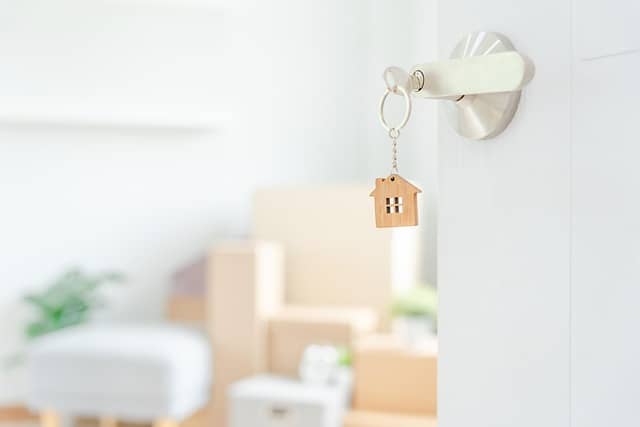
Relocating to a new home is an exciting journey—whether it’s upgrading to a bigger space, shifting to a better neighborhood, or simply starting fresh. But amidst the packing, renovations, and logistical planning, one critical aspect often gets overlooked: pest control.
Pests don’t care if a home is new or old; they seek food, shelter, and moisture, and your fresh start could easily become a breeding ground for unwanted invaders. This is where pre and post-move-in pest control becomes crucial.
Taking preventive measures before and after moving in ensures that your home remains pest-free from the very beginning. But is it really necessary? Let’s dive deep into why pre-move-in inspections and post-move-in treatments should be a part of your moving checklist.
Pre-Move-In Pest Control: Eliminating Problems Before They Begin
Getting rid of pests before moving in can save you time, money, and unnecessary stress. Whether your new home is freshly built or previously occupied, pests can already be lurking. Here’s why pre-move-in pest control is a smart move:
1. Detecting Hidden Infestations Before Moving In
Pests are experts at staying out of sight. While a home might look spotless, termites could be silently damaging wooden structures, or cockroaches could be hiding behind walls. A pre-move-in pest inspection exposes hidden pest activity, giving you a chance to eliminate infestations before they worsen.
Common Pests Found in New and Old Homes:
- Termites – Can cause severe structural damage before you even move in.
- Rodents – Might be nesting in attics or crawl spaces, chewing on wires and insulation.
- Cockroaches – Thrive in warm, dark corners, especially in kitchens and bathrooms.
- Bed Bugs – Could be left behind by previous occupants.
2. An Empty House is the Best Time for Pest Treatment
Before furniture, appliances, and personal belongings fill up your home, pest control treatments can be more effective. Professionals have unrestricted access to all corners, cracks, and crevices—allowing for a thorough application of pest barriers.
3. Creating a Long-Term Protective Barrier
Pest control isn’t just about eliminating existing pests; it’s also about preventing future infestations. Treating a house before moving in establishes a strong defensive shield against pests that may try to invade later. This means fewer chances of discovering unwanted guests down the road.
Prevention Steps Include:
- Sealing entry points (gaps, cracks, and vents) to block rodents and insects.
- Applying termite barriers or treatments to protect wooden structures.
- Spraying long-lasting residual insecticides in pest-prone areas.
4. Avoid Moving in with Pests
Your belongings, including furniture, mattresses, and storage boxes, could unknowingly carry pests into your new home. Bed bugs, cockroaches, and ants hitch rides on moving boxes. A pre-move-in pest control treatment reduces the risk of bringing pests along for the ride.
Pro Tip: Before moving, inspect furniture, clothes, and boxes for signs of pests. If needed, consider fumigation for items that may already be infested.
Post-Move-In Pest Control: A Necessary Follow-Up
Even after taking pre-move-in precautions, pests can still find ways to enter your home. Once you’ve settled in, post-move-in pest control ensures that your home remains pest-free.
1. Addressing Newly Introduced Pests
Despite all precautions, pests can still sneak in through open doors, moving boxes, and deliveries. Post-move-in treatments can eliminate any pests that have made their way inside during the moving process.
Key Areas to Inspect After Moving In:
- Kitchen – Pests love food storage areas; keep an eye on pantries and cabinets.
- Storage Rooms & Basements – Dark and cluttered areas are ideal hiding spots.
- Bathrooms – Silverfish and cockroaches thrive in damp environments.
2. Sealing Potential Entry Points
Once you’ve moved in, it’s a good idea to seal off any cracks, holes, and gaps that might have been overlooked. Rodents, cockroaches, and ants exploit even the smallest openings to get inside.
Common Pest Entry Points:
- Gaps around windows and doors – A common entryway for ants and cockroaches.
- Holes near plumbing and wiring – Perfect for rats and mice to squeeze through.
- Unsealed air vents and ducts – Insects can travel between units in apartments and condos.
3. Checking for Termite or Rodent Damage
Even if your new home looks perfect, there could be hidden damage caused by termites or rodents. A post-move-in pest inspection helps identify any early warning signs before they become major problems.
Look Out For:
- Hollow-sounding or soft wood (a sign of termite damage).
- Gnawed wires or insulation (possible rodent activity).
- Droppings near storage areas, corners, and under sinks.
4. Establishing Long-Term Pest Prevention
Pest control isn’t a one-time event—it’s an ongoing effort. Post-move-in treatments create an added layer of protection, ensuring that your home remains pest-free in the long run.
Pest Prevention Tips for New Homeowners:
- Store food in sealed containers to deter ants and cockroaches.
- Take out the trash regularly to avoid attracting pests.
- Maintain yard cleanliness (trim plants and remove debris to prevent mosquito breeding).
- Schedule regular inspections to catch pest problems early.
Is Pre and Post-Move-In Pest Control Necessary?
Absolutely! Whether you’re moving into a brand-new property or an older home, pests can be present before, during, and after your move. Taking proactive measures ensures that your home remains comfortable, safe, and pest-free.
Who Needs Pre & Post-Move-In Pest Control?
- Homeowners buying a resale property – Previous owners might have had pest issues.
- Families moving into a newly built home – Construction sites attract pests like termites and rodents.
- Apartment and condo dwellers – Shared walls can lead to pest migration from neighboring units.
- Businesses relocating to a new office space – Pest infestations in workplaces can lead to health concerns.
By investing in both pre-move-in pest control for prevention and post-move-in treatments for long-term protection, you can enjoy a fresh start in your new home without unwanted intruders.
So, before you settle in, make sure pest control is on your moving checklist—because a new home should mean new beginnings, not new infestations!
